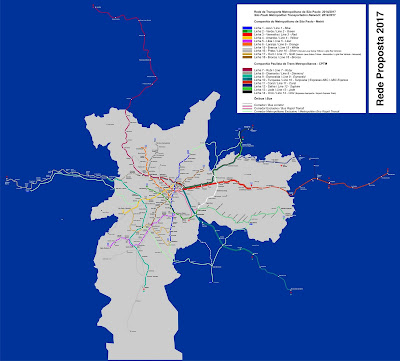Após seu fechamento em 2004, a Estação Barão de Mauá (mais conhecida com Leopoldina), passou a servir de depósito de trens abandonados aguardando restauração. Lá existem vários trens raríssimos que merecem ser salvos, como por exemplo o Guindaste de 1929, que durante anos serviu nas Oficinas de São Diogo, e o TUE Metropolitan Vickers Série 100, o primeiro trem elétrico de subúrbio do Brasil, fabricado em 1937.
After its closure in 2004, the Baron of Maua station (better known as Leopoldina), went on to serve the abandoned train depot awaiting restoration. There are several trainsvery few that deserve to be saved, such as Crane, 1929, which for years served in the Workshops of San Diogo, Metropolitan Vickers TUE 100-Series, the firstsuburban electric train in Brazil, built in 1937.
ALCOs RS-3 7108, 7122 e 7126, a três deste modelo existentes lá. A 7126 é a última com a pintura branca da CBTU ainda existente, as outras duas foram cortadas.
ALCOs RS-3 7108, 7122 and 7126, the three of this model exist there. The 7126 is the last one with the white paint of the CBTU still exists, the other two were cut.
ALCO RS-1, uma das últimas existentes senão a última.
ALCO RS-1, the last existing one if not the last.
ALCO S-1, manobreira de 1949, operou até os anos 90. Só resta essa, a 3003.
ALCO S-1, switchman, 1949, operated until the year 90. All that remains is this, the 3003.
ALCO FA-1 3201, também a única existente no Brasil.
ALCO FA-1 3201, also the only one in Brazil.
Raríssima Baldwin AS-616 3380, única no Brasil.
Rare Baldwin AS-616 3380, only in Brazil.
Guindaste de 1929, que durante anos serviu as Oficinas de São Diogo.
1929 Crane, who for years served as workshops in San Diogo.
TUE Metropolitan Vickers Série 100 de 1937, o primeiro trem-unidade elétrico. Este é o único inteiro, os outros restantes foram transformados em vagões de socorro, alguns em operação na CPTM e outros na Supervia.
TUE Metropolitan Vickers 100 Series of 1937, the first electric drive train. This is thesingle integer, the other remaining cars have been turned into relief, some in operation in Supervia and others in the CPTM.
Dois carros dormitórios do expresso Cruzeiro do Sul, que ligava São Paulo e Rio de Janeiro.
Two dormitories-cars of the Cruzeiro do Sul Express, linking Sao Paulo and Rio de Janeiro.
Visão geral dos trens abandonados no pátio.
Overview of the abandoned train yard.











